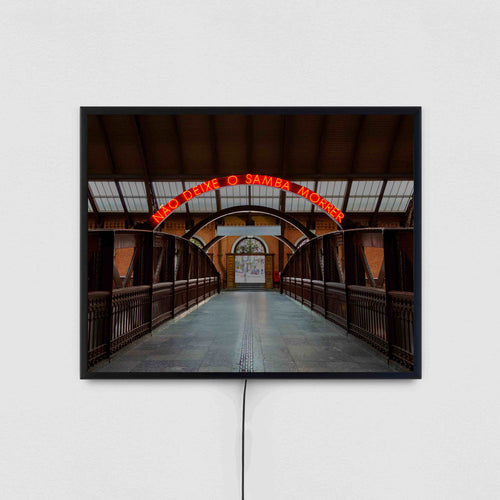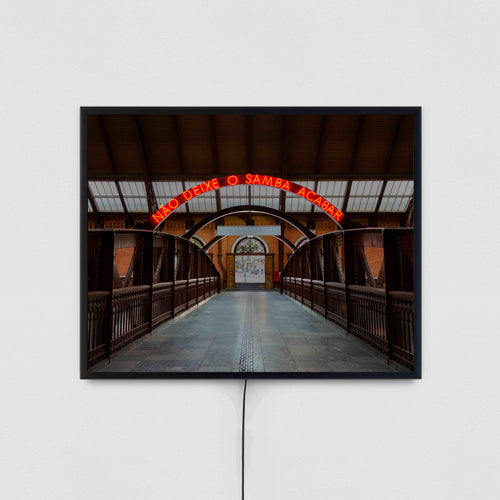“Sing Loudly/Sing Loudly, from the Samba Exaltation series”
Sing Loudly/Sing Loudly, from the Samba Exaltation series
(SKU. 12965)
-
Date
2021-2024 -
Technique
backlight mounted lenticular printing -
Dimensions
(H x W x D) 51 x 40 x 7 cm -
Edition
15 + 3PA -
Comes with certificate of authenticity
Couldn't load pickup availability
" In the year of the absent Carnival of 2021, in which the streets could not be swallowed by the desire of liberated bodies dressed in delirium, we occupied the city with light and samba, red and silence. Whether through the evidence of its absence or the affirmation of its presence, the project brings rhythm not only as music, but as ancestral knowledge. When we find ourselves without paths, we return to the elders for guidance, and so we turn to samba with the reverence directed at those who taught us to walk, dance and, above all, inhabit and tension precariousness and entropy. elements of the works.
This urban intervention project took place simultaneously at Estação da Luz and the Mário de Andrade Library in São Paulo. In the first, we illuminated the cry “No Leave the Samba M orrer/ A cabar”, by Edson Conceição and Aloísio Silva, which became known in the voice of Alcione in 1975. In the second, “Canta Forte/Canta Alto”, evoking the chorus of “Canta, canta, minha gente”, recorded by Martinho da Vila in 1974. In front of the workers, men and women, citizens who travel, inhabit and transform the c age, samba materializes as a voice that emanates from the street and insists on shining silently. elements of the works.
For Carbono Galeria, we transformed images recording urban interventions into lenticular prints mounted on backlight . The technique allows us to see the two phrases of each work, revealing the two verses of each song as we move around the light boxes. In this way, the works are positioned between photography and cinema, graphic light and projected light, poem and song.
Thus, as the ultimate way of reinventing our existences, we return to samba as a knowledge that flows from the terreiros and sets itself in motion in the world. We seek in it the symbolic cure for our presence. We therefore call upon song, trickery and the ancestral knowledge of the crossroads as the ultimate ways of existing and resisting."
Felipe Moraes























